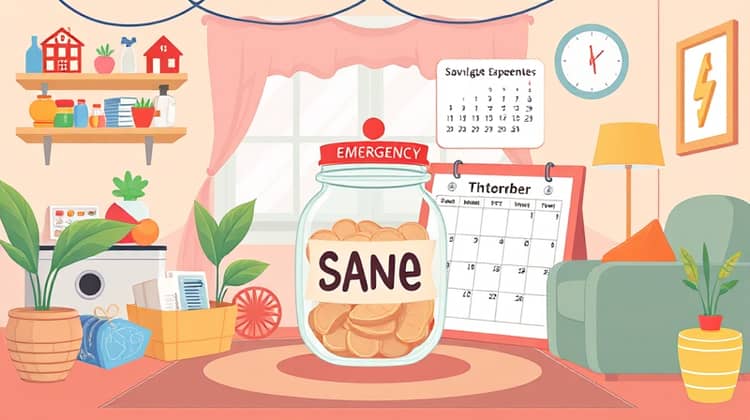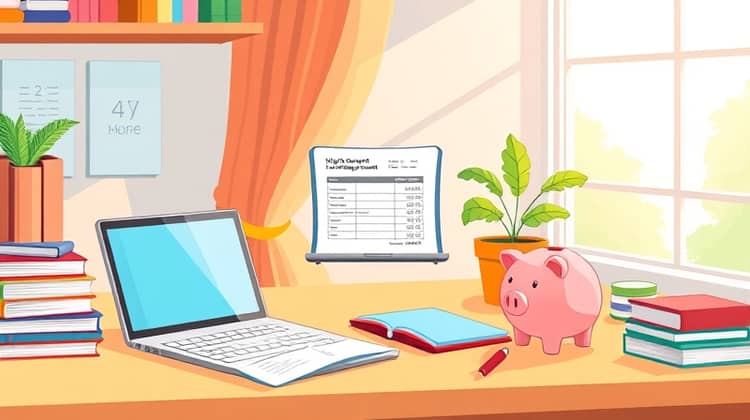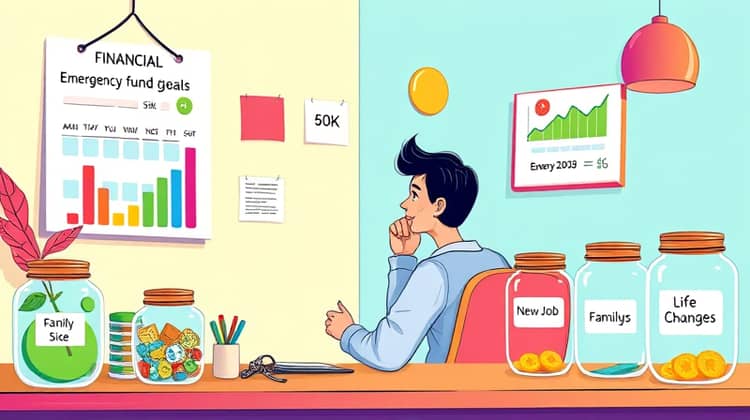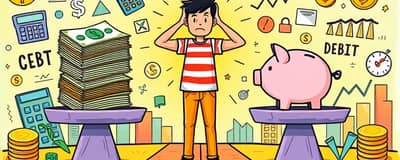Emergency Fund Basics: A Step-by-Step Plan for Success

With unexpected expenses creeping into our lives, the importance of having a financial safety net has become increasingly clear. That's where an emergency fund comes into play—a dedicated savings account designed to cover unforeseen costs without leading to financial distress. In this blog post, we will dig deep into the essentials of emergency funds, examining what they are, why you need them, how to build and maintain them, and the best practices to follow.
An emergency fund is not just a luxury; it's a necessity for financial well-being. The security it provides allows you to navigate life's surprises, such as medical expenses, car repairs, or sudden job loss, without derailing your overall financial stability. Allocating time and resources to building this fund can provide peace of mind and promote responsible budgeting.
In this guide, we will examine the concept of an emergency fund in detail, explaining its components and the strategies for establishing one. Whether you are looking to start your journey in financial security or want to enhance your current savings, we have crafted a step-by-step plan to set you up for success.
By understanding how to create an emergency fund and consistently maintain it, you can gain full control over your financial future. Let's delve into the basics and starting points that will pave the way toward a resilient financial life.
What Is an Emergency Fund?

An emergency fund is defined as a dedicated amount of money set aside to cover unexpected expenses, ensuring financial stability in tough situations. This type of fund is vital for anyone looking to maintain a healthy financial status, as it serves as a buffer against unforeseen circumstances that life may throw your way.
Establishing an emergency fund is crucial not only for protecting against external shocks but also for fostering a sense of financial security. Life is inherently unpredictable, and having funds readily available can provide much-needed relief from anxiety surrounding possible emergencies.
Typically, emergency funds are kept in a separate savings account to avoid being tempted to use them for daily expenses or non-emergencies. This helps in maintaining discipline while saving and ensures that funds are indeed available when urgent needs arise.
The primary goal is to accumulate enough savings to cover several months' worth of living expenses, allowing individuals to navigate life’s uncertainties without resorting to debt or compromising their financial health.
Why You Need an Emergency Fund

Building an emergency fund should be a priority for everyone. It allows for peace of mind in knowing that you have a financial safety net to fall back on during economic hardships or sudden life changes.
- To cover unexpected expenses such as medical bills or car repairs
- To safeguard against loss of income in case of job layoff
- To gain financial independence and confidence in your budgeting skills
- To mitigate financial stress during uncertain times
Ultimately, having an emergency fund can transform your relationship with money, enabling you to make more informed financial choices.
How Much Should You Save?

When considering how much you should save in your emergency fund, a common guideline is to have at least three to six months' worth of essential living expenses covered. This amount can vary based on individual circumstances, such as job security, household size, and monthly obligations.
It’s important to assess your specific situation. For example, if you have a stable job with a steady income, you may opt for a smaller emergency fund; however, if you’re a freelancer or have a volatile income, aiming for closer to six months may offer you more security.
- Determine your essential monthly expenses (housing, food, healthcare, utilities)
- Set a target amount based on the number of months you want to cover
- Create a separate savings account for your emergency fund
- Automate your savings to ensure consistent contributions
By following these steps, you can create a clear savings plan that aligns with your individual financial needs.
Where to Keep Your Emergency Fund

Choosing the right place to keep your emergency fund is just as crucial as the amount you save. Ideally, this fund should be easily accessible but also separate from your regular checking or savings accounts to minimize the temptation to dip into it unnecessarily.
High-yield savings accounts or money market accounts are excellent options to consider since they offer better interest rates compared to traditional savings accounts while still allowing quick access to your funds.
- High-yield savings accounts
- Money market accounts
- Certificates of deposit (CDs) with a short-term maturity
- A dedicated account with an online bank
By selecting the right account, you can maximize your savings while keeping them secure and accessible when needed.
Step-by-Step Plan for Building Your Emergency Fund

Building your emergency fund doesn't have to be overwhelming. Follow these steps to create and grow your savings with confidence and ease.
Start with a small goal to make the process manageable. It’s important to celebrate small milestones to keep yourself motivated.
- Start with an initial target of $500 to $1,000
- Set up automatic transfers from your checking account to the emergency fund account
- Increase your contributions as your financial situation improves
- Reassess and adjust your fund size annually based on your current financial situation
By committing to these actions, you'll build your emergency fund steadily while also fostering positive financial habits.
Maintaining Your Emergency Fund

Once your emergency fund is established, maintenance becomes key to its effectiveness. It's essential to monitor and review your fund regularly, adjusting the target amount as needed based on your financial situation and changing life circumstances.
Continuing the habit of regular contributions will strengthen your fund over time. Many find that re-evaluating their contributions after any significant life change—like a new job or change in household size—can keep their fund appropriately sized.
- Review your emergency fund goals every six months
- Adjust your contributions as needed based on life changes
- Always redirect unexpected bonuses or windfalls into your emergency fund
By maintaining your emergency fund actively, you can ensure it remains an effective resource in your time of need.
Fund dos and Don’ts

When it comes to emergency funds, there are certain dos and don’ts to keep in mind that can be pivotal to your financial well-being.
Understanding these principles will help you utilize your emergency fund effectively.
Conclusion

In conclusion, having an emergency fund is a cornerstone of financial security. The peace of mind it provides is priceless and allows individuals to approach life’s uncertainties with confidence. By committing to establishing and maintaining an emergency fund, you are taking a significant step toward financial independence.
We explored the core concepts of emergency funds, discussed how to determine the amount you should save, and looked into the best strategies for maintaining this vital resource. Responsibilities may shift, and life can be unpredictable, but your emergency fund can help to not only safeguard against these uncertainties but also solidify your overall financial plan.
As you embark on your journey to building and maintaining an emergency fund, remember that small, consistent contributions can lead to significant outcomes. Stay committed and revisit your goals periodically to ensure they align with your current needs and lifestyle.
With patience and persistence, your emergency fund will serve as a solid foundation for financial resilience.






